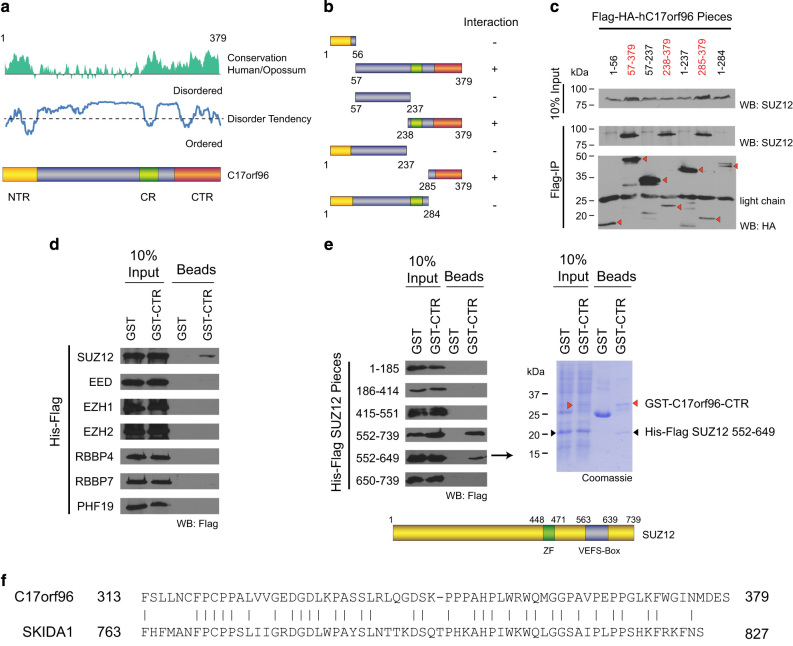Figure 3.
C17orf96 directly interacts with SUZ12. (a) C17orf96 is an intrinsically unstructured protein but it possesses three regions (N-terminal region (NTR), central region (CR) and C-terminal region (CTR)) with enhanced homology and reduced disorder tendency, suggesting functional relevance. The homology plot was obtained using Vector NTI by comparing C17orf96 from human and opossum. The disorder blot was made using IUPreD [47] with human C17orf96. (b, c) Semi-endogenous co-immunoprecipitation in HeLa-S cells expressing different parts of human C17orf96. The CTR is necessary and sufficient to co-immunoprecipitate the endogenous SUZ12 protein. (d, e) Using a bacterial co-expression approach followed by batch purification, the CTR (aminoacids 285–379) was found to directly interact with the VEFS-box of SUZ12. The Coomassie shows the interaction of GST–CTR, and not GST only, with the VEFS-box of SUZ12. (f) The CTR is conserved among C17orf96 and SKIDA1 (C10orf140; 52% identity).

